It feels like I have witnessed the following scene a thousand times. It is day two of the still-known-as-TAP, newly named DOLEW workshop. The time we have all been waiting for: resume writing!
As I rove the room asking each participant if I can help, or whether or not they would like me to look at their resume draft, it is not long before I come across a service member with the look of someone who’s been stun-gunned – leaning back in his seat, hands flat on the desk in front of him, staring into the empty laptop screen. “I don’t know what to write. My job in the military has nothing to do with what I want to do when I get out,” he tells me. Or the stun-gunned II alternative: “I’m going to school when I get out; I don’t have any experience that relates to my field of study.”
That is when I unleash the little known secrets and hidden powers of O*NET, or Occupational Information Network. O*NET is a resource that is previewed on day one of the DOLEW/TAP workshop, but just like learning a language, it does not really sink in until it is placed into context. In this case, the context is its stronghold as one of the most powerful resume-writing solutions for career changers like those mentioned above.
At one of my workshops in Germany, a participant was at a complete loss as to how his current job as a pianist for the U.S. Army Europe Band and his future educational goal of nursing school had anything in common. We had hammered home the importance of transferable skills (those obtained in the military that transfer to the civilian world) and, for the life of him, he could not imagine what tickling the ivories had to do with drawing blood. Let’s go over the step-by-step process to discover how easy it is to leverage the power of O*NET to position yourself for your future career – even if it has nothing to do with your military job.
Step 1 – Quick Search
Visit and locate the occupation quick search at the top right hand corner of the page. Enter your future career goal, aka, the career you hope to work in after you separate from the military, or the one that you will study in school to prepare you for that career. In the case of the Germany pianist, that title was “nurse.”
Step 2 – Pick Your Future Job Title
Click on the arrow, and O*NET’s Quick Search will give you a list of related job titles shown by relevance. This is just one way that O*NET helps you to start exploring career options. You may see titles that are unfamiliar to you, but click away! If the summary report that you land on looks like it is something you would enjoy, explore further. Check out the employment trends and determine if the employment outlook is hopeful or one that makes you rethink whether or not you should be going into this profession. Does the wage information match your bottom line? Will you be able to complete your additional training and education in your allotted timeline, or is there a better job that you qualify for right now? This is all vital information to research before making your next career move.
Step 3 – Print the Summary Report
Click on the blue highlighted title of the future job you are interested in. This takes you to the summary report. Read it over thoroughly. If it still looks like your dream job, print a copy. I know, I know – nobody works with paper anymore, but trust me, this is one instance when a paper copy is preferable. Don’t have a printer? Visit your library and print a copy there. Or go to the transition office on base (ACAP/SFL TAP, FFSC, MCCS, AFRC) and use their printer. Your awesome resume depends on it.
Step 4 – Use the Military Crosswalks to Your Advantage
From any page on the O*NET website you can click on the “Crosswalks” tab. Step four in your awesome resume quest is that you go to the military Crosswalk and enter your MOS, AFSC or Ratings code and click “go.”
After clicking “Go” here is what comes up:
Click on the job title that best represents your work. In this case “Musicians, Instrumental.” You know what I am going to say, right? Print out the summary report for your current military job. Here is a partial screen shot of the summary report so that you will know what to look for:
Über-meticulous types: click details tab and print out an even more in-depth report.
Don’t-Be-Bitter Note to People with a Random MOS, AFSC, or Rating that has nothing to do with your military workday: If you have a military job code that doesn’t relate at all to how you spend your time on the job, pick the code that best represents your daily work. Let’s say that when you enlisted, you were told that you would be a 79S, or career counselor, for the Army. Each day you go to work, slightly bitter, wondering how in the heck you are going to explain to your future civilian employer that your job title has nothing to do with your actual duties. In fact, what you do is serve as an executive assistant for your entire company (71C, an MOS that is phased out but you can still find it in O*NET because O*NET is that awesome). Your best move is to print out the summary report for 71C and use it for STEP FOUR. You will ask, “What job title am I supposed to use on my resume?” The answer: Executive assistant. Why? It’s what you do. Caveat: When making this bold, smart move, coach all of your references to refer to you as the “executive assistant.” They should not say, “He was a 71C” or “Well, she was officially a career counselor, but that’s not really what she did…” Sounds sketchy, right?
Step 5 – Find Your Dream Job Ad or Course of Study Description
For Career Changers: Find your dream job ad and print it out.
For College Students: Visit the university websites where you plan to apply or have been accepted (you will craft a solid resume for part-time jobs or internships in college while your military experience is still fresh in your mind) and find their academic, course of study or curriculum tab for the program you will follow. Print out any information that you think is important. Here is a partial example from a nursing program. I have highlighted skills which are a dime-a-dozen for service members:
- Evaluate client and family responses to health and illness as a basis for promotion, restoration and maintenance of health and functional abilities and the prevention of illness
- Provide leadership in effecting positive change in professional, social, political, and ethical situations to advance nursing, healthcare and health policy
- Demonstrate competencies as an advanced practice nurse through successfully meeting standards for national certification
Step 6 – Scout-Out Transferable Skills & Key Words
Remember the Golden Rule: Your resume will take you to “Nowhere-ville” fast unless you clearly show the college admissions officer or hiring official that you have what it takes. The key to grabbing a selection official’s attention is showcasing your skill set in a way that shows right now that you can do that job or succeed in that course of study. Here’s how in under 10 steps:
- Gather your tools: highlighter(s), pens, your preferred note-taking implement
- Find a good work station with plenty of room and access to the outdoors so that you can take frequent breaks. This is tedious work, so do it when you are well rested and fed.
- Lay your summary reports (one for your military job, one for your future job) in front of you.
- Begin going through each section of the report of your current job and scan the tasks, tools and technology, knowledge, skills, abilities, work activities, work context, even the job zone. Every segment will contain useful information. Now do the same quick scan of your future job summary report.
- After completing the initial scan of your reports, begin to highlight every phrase on your current job summary report that appears on your future job summary report. Those are your transferable skills, or key words, and you will include them in your resume to make yourself marketable as a student applying to a new field of study or internship, or a career changer applying for a new type of job. Use your own judgment and also highlight any key phrase that appears on your future job summary report if it applies to you but does not appear on your current job summary.
- Whip out your dream job ad or college information and complete step five again.
- Bask in the magnitude of your qualifications for your future career! You now have a plethora of words which you can use on your targeted resume as taught in your DOLEW/TAP class.
Just a few of the many qualifications shared by two seemingly unrelated professions, as discovered on O*NET:
| Musician & Nurse |
| Active Listening – giving full attention to what other people are saying, taking time to understand the points being made, asking questions as appropriate and not interrupting at inappropriate times. |
| Problem Sensitivity – the ability to tell when something is wrong or is likely to go wrong. |
| Ability to be exact or accurate. |
| Work with a Group or Team. |
| Finger Dexterity — The ability to make precisely coordinated movements of the fingers of one or both hands to grasp, manipulate, or assemble very small objects. |
Written By: Dana Murguia, Regional Project Manager for GBX Consultants, Inc. DOL Employment Workshops









